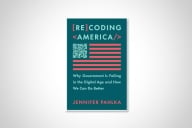You have /5 articles left.
Sign up for a free account or log in.
California just made school lunches free for all K-12 public school students, regardless of family income.
This is a spectacularly good idea and one that community and state colleges would be well advised to examine closely. It even had bipartisan support, which is saying something.
It’s a great idea on several levels. Most basically, it ensures that every student gets a decent meal every day. Our bifurcated economy no longer does that; too many students go without. That has obvious effects on their behavior in school, but it’s also just harrowing: with the most productive economy in the world, the idea that it’s reasonable to force students to go hungry is indefensible.
Making lunch universal also gets around the paperwork and bureaucracy involved in sliding scales, income caps and the like. It enables schools to redirect resources from policing hungry children’s families to make sure they don’t make “too much.” Instead, those resources can be redirected to serving food or to helping students in other ways.
That’s particularly important in areas with high costs of living. Incomes that might sound reasonably middle class in some parts of the country are far short of middle class here. When a single dollar figure defines the cutoff across an entire country, or even an entire state, it invariably misses some people who are really struggling. But if the food is just there, with no asterisks or qualifiers, then all those issues simply fade away. And it will make a real difference for families whose incomes are just slightly over the cutoff, or where the parents aren’t in a position -- whether due to odd hours, mental health issues or whatever else -- to reliably pack lunches. No kid should go hungry because of that.
It also takes the stigma away from students who currently get free or reduced-price lunch. If everybody gets free lunch, then it’s no more stigmatizing than if everybody gets a textbook. It’s just part of what everybody needs. Stamping their hands, or chasing them down for “lunch debt,” just adds insult to injury. Consign those practices to the dustbin of history.
As it happens, free lunches for everybody can also create demand that supports local farmers. Nothing wrong with that, either.
As Sara Goldrick-Rab has pointed out for years, the free lunch program expires after high school. We should rethink that.
As the parent of a college student, I can attest that they get hungry, too. And we know well that many students, especially at community colleges, often go without food for economic reasons.
Admittedly, the mechanisms here would have to be somewhat different. Many colleges have outsourced their campus food service over the years; some even have multiple private vendors on campus in arrangements that resemble food courts at malls. Part of the reason for that was to generate revenue. But an adapted free lunch program could work on many campuses, even with outsourcing. “Food scholarships” can load money onto student IDs, which can be swiped for meals. That already happens on many campuses. If people are paying for food with swipes, then you don’t know how my card was loaded and I don’t know how yours was; we’ve denied stigma a chance. And using a form of scrip can allow for a much wider range of culinary options than just the classic cafeteria line, so students with different sorts of dietary variations can be included.
The real scandal of it is that, done at scale, it’s relatively cheap.
Thank you, California, for taking the lead. The program is simple, cheap, fair, respectful and almost certain to make a real difference. It’s the kind of idea I’d love to see public higher ed steal and adapt.



